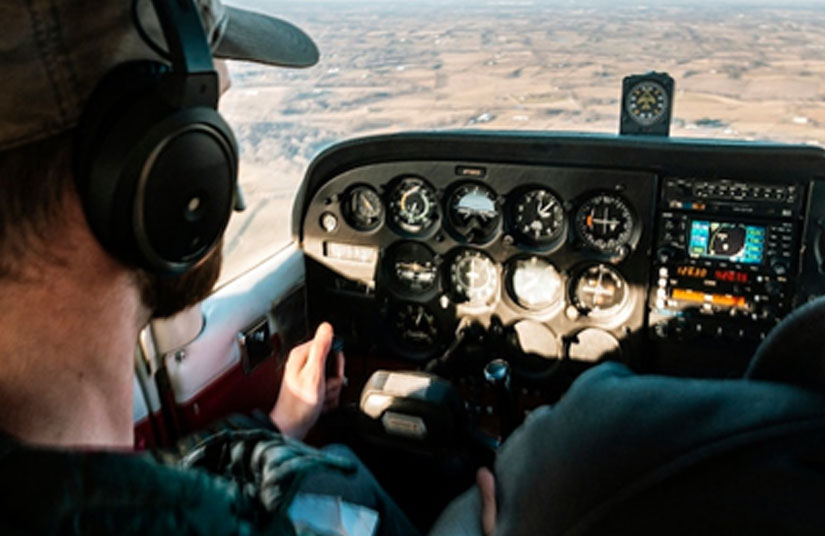The skies have always exuded a certain mysticism that has long captured the attention of mankind. The aviation industry has witnessed amazing development from the early days of the Wright brothers’ first successful flight to the sleek jets that crisscross our skies today. But the aviation sector has changed in other ways as well, including through the advancement of aviation education.
The Early Days of Aviation Education
Early in the 20th century, aviation was a risky and unexplored field. Pilots relied as much on instinct as they did on formal instruction when learning to fly, which frequently involved trial and error. But as aviation evolved from a novelty to a necessity, it became clear that systematic teaching was necessary.
A pivotal point was the creation of specialised aviation schools in the 1920s. These institutions, including the Spartan School of Aeronautics and Embry-Riddle Aeronautical University, attempted to give future aviators the abilities and information required to travel safely in the air. These early aviation education programmes were built around the fundamentals of aerodynamics, aircraft mechanics, and navigation.
Advancement in Aviation Education
As aviation technology progressed, so did the complexity of education in the field. World War II marked a significant period of advancement, as military aviation training became highly specialised and rigorous. This period laid the foundation for the modern aviation education system.
The post-war era saw the emergence of degrees specifically tailored to aviation. Universities began offering bachelor’s and master’s degrees in aviation-related fields, encompassing disciplines such as aviation management, aeronautical engineering, and air traffic control. These programs combined technical expertise with management skills, catering to the diverse needs of the aviation industry.
The Present Landscape
The panorama of aviation education today has many facets and may accommodate a variety of professional objectives. There is a career route for any enthusiast, whether they aspire to be a pilot, an aviation engineer, a maintenance technician, or an aviation management.
Modern technology and sophisticated simulators are being used by flight schools to simulate real-world flying situations. These institutions place a strong emphasis on decision-making under time constraints and safety procedures in addition to flying techniques. To get their licences, students must complete extensive training, ensuring they meet the high requirements of the aviation authority.
Universities provide thorough degree programmes that cover every aspect of aviation. While aviation management courses give students business acumen relevant to the aviation industry, aeronautical engineering programmes focus on the design and upkeep of aircraft. The industry’s dedication to operational effectiveness and passenger safety is reflected in the rise of specialisations like air traffic control and aviation safety.
The Future of Aviation Education

As we look to the future, various trends are influencing aviation education:
Technology: Data analytics, artificial intelligence, and virtual reality are revolutionising aviation education. Pilots can practise emergency situations in increasingly realistic simulations, which helps them develop their decision-making abilities.
Sustainability and Innovation: With the emphasis placed on environmental preservation on a worldwide scale, sustainable practices and alternative fuels are becoming more and more the focus of aviation education. Future aviation workers will need to comprehend the industry’s efforts to lower its carbon footprint and contribute to those efforts.
Online learning environments: As online education becomes increasingly common, ambitious aviation professionals can now access coursework and training materials from anywhere. People with other obligations or who are currently employed can be accommodated by this flexibility.
Career In Aviation
The variety of aviation employment options is astounding:
- Commercial Pilot: Thorough flight training and acquiring the required certifications enable one to realise their ambition of piloting a commercial aircraft. Pilots may work for airlines, carriers of goods, or owners of private aircraft.
- Aeronautical engineers: They plan, create, and test aeroplanes and the parts that go into them. Aeronautical engineers are responsible for driving aviation’s technological developments, from inventive aircraft designs to propulsion technologies.
- Air traffic controllers: They oversee take-offs, landings, and airspace congestion while being in charge of the safe and effective movement of aircraft. Their crucial duty makes sure that the skies run smoothly.
- Aviation Manager: Aviation managers are in charge of the logistical and administrative facets of the business, from managing airlines to managing airport operations. Their knowledge guarantees that flights are planned, resources are used effectively, and safety
- Aviation safety expert: Keeping aviation safe is of the utmost importance. Safety experts create and put into practice protocols to stop accidents, look into events, and maintain high safety standards.

The advancement of aviation education is commensurate with that of the sector it serves. Aviation education has welcomed innovation and reinvention from its modest origins to the vibrant environment of today. Aviation education will continue to advance as we fly into the future, thanks to the industry’s dedication to safety, sustainability, and cutting-edge technology, enabling the next generation of professionals to take flight in this fascinating area. There is a place for you in the limitless skies of aviation, whether you’re intrigued by the workings of flight or the complexities of aviation administration.


